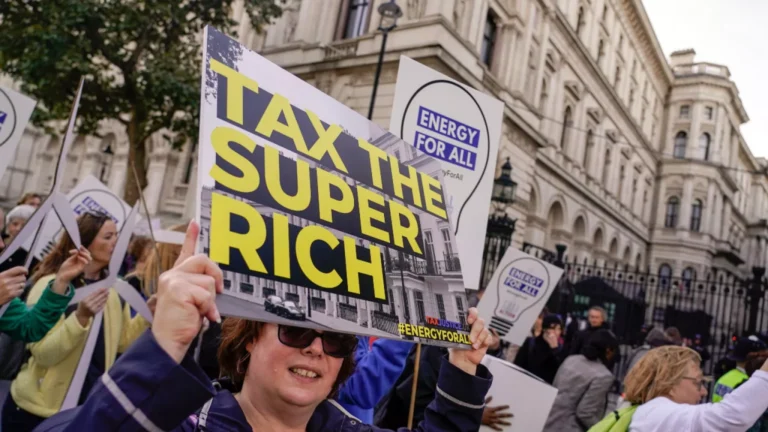
A proposal for European Union
The issue of debt financing for the Union’s expenditure is quite complex, as the global economy faces significant challenges stemming from various factors, including geopolitical tensions, ecological and digital transitions, and the disruptions caused by the new American administration. In this intricate context, the European Union, as outlined in the Draghi Report on competitiveness1, requires a minimum additional annual investment ranging from EUR 750 to 800 billion euros to achieve the objectives specified in the report. This amount represents approximately 4.4% to 4.7% of the EU’s GDP in 2023. Furthermore, the Russian invasion of Ukraine has underscored the urgent need to enhance security policies aimed at protecting the Union. According to estimates from Bruegel. “European defense spending will have to increase substantially from the current level of about 2 percent of GDP. An initial assessment suggests an increase by about €250 billion annually (to around 3.5 percent of GDP) is warranted in the short term”2.
Ultimately, a realistic estimate of the annual cost for producing European public goods is approximately 1 trillion euros per year. The Draghi Report indicates that planned expenditures for security are around 50 billion euros. By adding another 200 billion euros earmarked for defense, to reach the level hypothesized by Bruegel, this brings us to the extensive total of 1 trillion euros annually. According to the report, it is generally estimated that about 20% of the total investments required will need to be financed through public resources. This figure is likely underestimated, particularly in the initial phase, as private investments will require incentives from public funds. Consequently, the additional resources needed each year in the European budget could be estimated to range between 200 and 250 billion euros. This is a figure that appears absolutely out of reach for the current finances of the Union. It is therefore a question of identifying new resources to support these investments.
The first way is represented by the issuance of European bonds that could also favour the creation of a safe asset for countries that are trying to escape from their dependence on the dollar, such as China and other states in the South of the world. But, even in this case, the sums necessary for debt servicing will have to be made available to the budget (in the case of servicing the emissions carried out under NGEU, the Commission estimates that 30 billion euros are already needed annually). In this perspective, also taking into account the socially imperative need to reduce the inequalities that the recent evolution of fiscal policy has created in the distribution of income, it is necessary to seriously evaluate the possibility of introducing a form of taxation of the super-rich resident within the Union, with a tax that could generate a double dividend: on the one hand, generating the resources necessary for the production of European public goods and, at the same time, ensuring the production of social services essential to avoid a further widening of inequalities within European society.
In the post-war period, there were significant global improvements in income distribution. However, inequality, after accounting for taxes and transfers, has steadily increased over the last two decades. This trend is largely attributed to a less redistributive fiscal policy, characterized by a substantial reduction in the progressivity of income tax. According to data collected by Gabriel Zucman3, wealth inequality in the United States has dramatically risen since 1980. The top 1% of earners held about 40% of the nation’s wealth in 2016, compared to 25-30% in 1980. A similar trend is observable worldwide, with the concentration of wealth increasing. For instance, in China, Europe, and the United States combined, the wealth share of the richest 1% has grown from 28% in 1980 to 33% today, while the share of the bottom 75% stands at approximately 10%.
The accumulation of a large fortune results from personal ability and commitment, but it is also facilitated by the social environment and the availability of public goods. The introduction of a progressive wealth tax should ensure that after deducting the amounts paid for wealth and inheritance taxes—funding the production of essential public goods that support individual efforts—there remains a residual amount for rewarding the activity and commitment that led to the accumulation of wealth. This remaining amount can then be distributed based on individual choices, whether passed on to heirs, used for social utility, or allocated to support activities of collective interest. Therefore, implementing a wealth tax would strengthen social cohesion and enhance the potential for growth in a society with reduced inequalities.
In Europe, as the need for spending increases to support the ecological and digital “double transition,” as well as measures to ensure the continent’s defence and the security of its citizens, it is becoming increasingly difficult to raise the tax burden on taxpayers. Meanwhile, the super-rich are able to pay taxes at a rate that is virtually non-existent. According to the Global Tax Evasion Report 2024, prepared by the EU Tax Observatory4, there are numerous opportunities for the wealthy to evade various forms of income taxation, resulting in effective tax rates of only 0% to 0.5% of their total wealth. In contrast, income taxes for ordinary citizens, who cannot exploit similar elusion tactics, range between 20% and 50%. This disparity is increasingly politically unsustainable. However, some progress has been made with the establishment of new forms of international cooperation, including an automatic and multilateral exchange of banking information that has been in effect since 2017 and is now applied by over 100 countries in 2023. Additionally, a historic international agreement for a global minimum tax on multinational corporations was approved by more than 140 countries and territories in 2021.
To address this situation, four countries—Germany, Spain, Brazil, and South Africa—recently proposed introducing a wealth tax during a meeting of the Finance Ministers of the G20 nations. This proposed tax would have a rate of 2% on the approximately 3,000 billionaires worldwide. According to the Global Tax Evasion Report 2024, implementing a global minimum tax on billionaires at this rate could generate around $250 billion in annual tax revenues. This revenue would help reduce inequalities and provide public funds for essential interventions needed in the aftermath of the pandemic, the climate crisis, and military conflicts in Europe and the Middle East.
Regarding the situation within the European Union, the aforementioned Report estimates that the 499 European billionaires – defined as taxpayers with an average individual wealth of 4.85 billion euros – enjoy a total wealth of 2,418 billion euros (about 13% of the Union’s GDP, which amounts to 18,590 billion in 2023), and is higher than Italy’s GDP, equal to 2,128 billion euros. The wealth related tax that could be introduced at the Union level should prescribe a rate of 2%5. The amount owed to the tax authorities by each ultra-rich taxpayer should reach at least this level, including what has already been paid for personal income tax purposes, generating revenue of 48.4 billion. The aim of such a wealth tax is to ensure – similar to what was defined at the OECD regarding the 15% rate for minimum taxation of multinational companies – that the super-rich pay a minimum rate overall compared to their income. Consequently, the amount of personal taxes that the super-
rich currently pay (estimated at 6 billion, with an average rate of 0.25%) would be subtracted from the wealth tax revenue. Ultimately, the additional revenue from a 2% tax proportional to wealth would amount to 42.4 billion (approximately 30% of the payments entered in the 2024 budget of the Union, which total 142.6 billion), with an impact on each taxpayer of about 85 million.
This proposed minimum tax should be viewed not as a wealth tax, but rather as a mechanism to enhance the income tax system. A billionaire already paying the equivalent of 2% of their wealth in income tax would not pay anything additional. However, billionaires who currently contribute less than 2% of their wealth in income tax would have their individual payments increased to match this 2% threshold based on the value of their assets. This approach differs from a traditional 2% wealth tax for billionaires, which would be an additional charge on top of the income tax owed. In contrast, the minimum tax suggested here is simply an adjustment to their existing income tax payments.
To assess the economic implications of this measure, it is important to highlight that the effective tax rate for billionaires in the European Union is currently less than 0.3% of their wealth. Additionally, the Zucman Report estimates that the average pre-tax return on wealth for very high net-worth individuals has been around 7.5% per year (after adjusting for inflation) over the past four decades. Therefore, the proposed 2% increase associated with this new tax would likely have a minimal impact.
While a minimum tax on the wealthy would not resolve all issues related to tax equity, it will represent a significant component of an ideal tax system. This system should also include a highly progressive income tax and a similarly progressive inheritance tax. Ultimately, funding public goods will need to rely more heavily on a tax on wealth, alongside indirect taxation on excessive consumption in advanced societies and the harmful use of natural resources. This approach is essential to encourage a gradual reduction in income inequality, which is increasingly undermining social cohesion within our communities.
1 The Future of European Competitiveness, September 2024
2 G.B. Wolff, Defending Europe without the US: first estimates of what is needed, Bruegel, Brussels, 21 February 2025
3 G. Zucman, Global Wealth Inequality, Annual Review of Economics, 2019
4 A. Alstadsæter, S. Godar, P. Nicolaides, G. Zucman, Global Tax Evasion Report 2024 https://www.taxobservatory.eu/publication/global-tax-evasion-report-2024
5 In France, the National Assembly approved on 21 February 2025, at first reading, a bill establishing the introduction of a minimum wealth tax on taxpayers with assets exceeding 100 million euros, in order to tax them up to 2% of the value of their assets. This new tax would affect 0.01% of taxpayers, or approximately 1,800 taxpayers.
